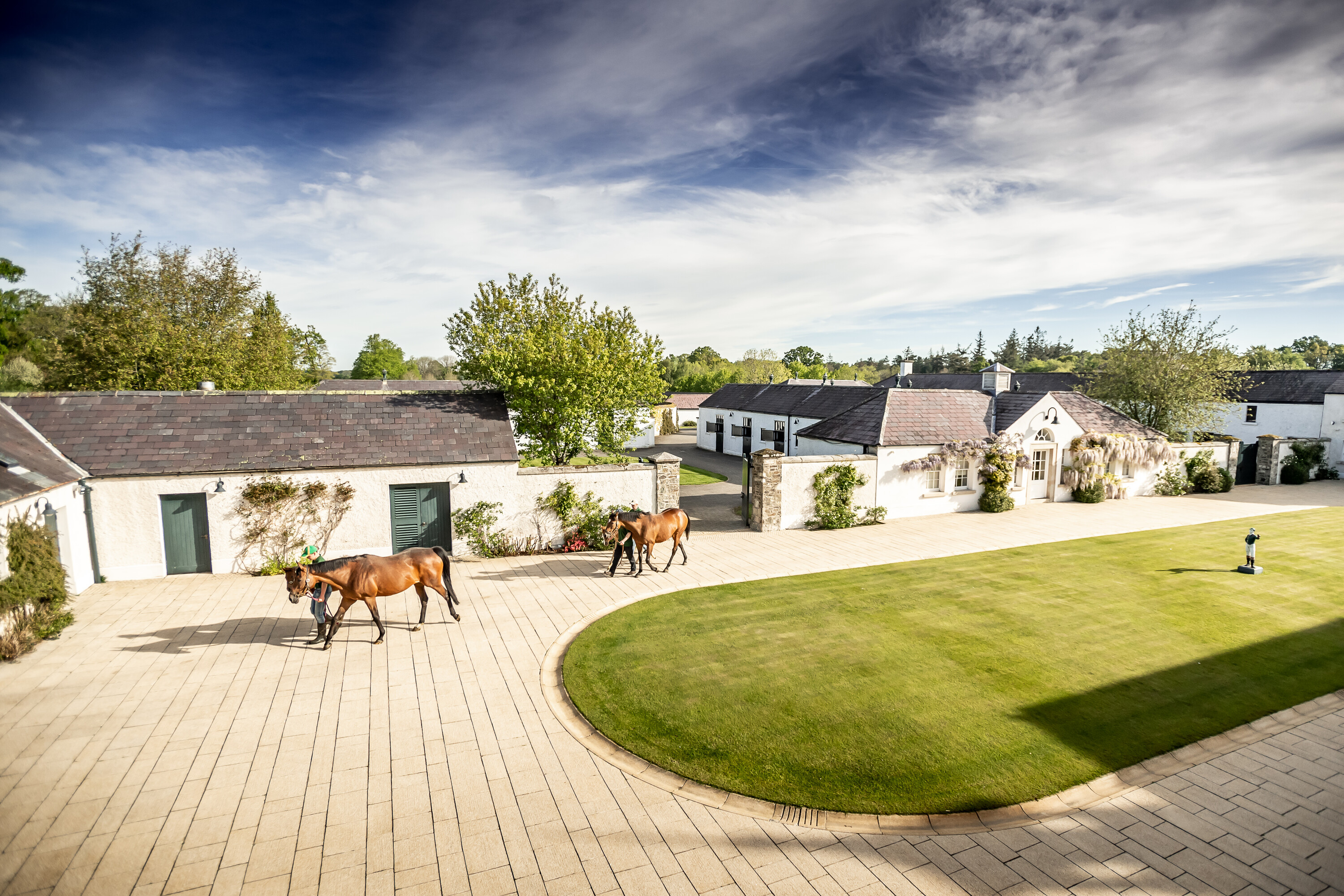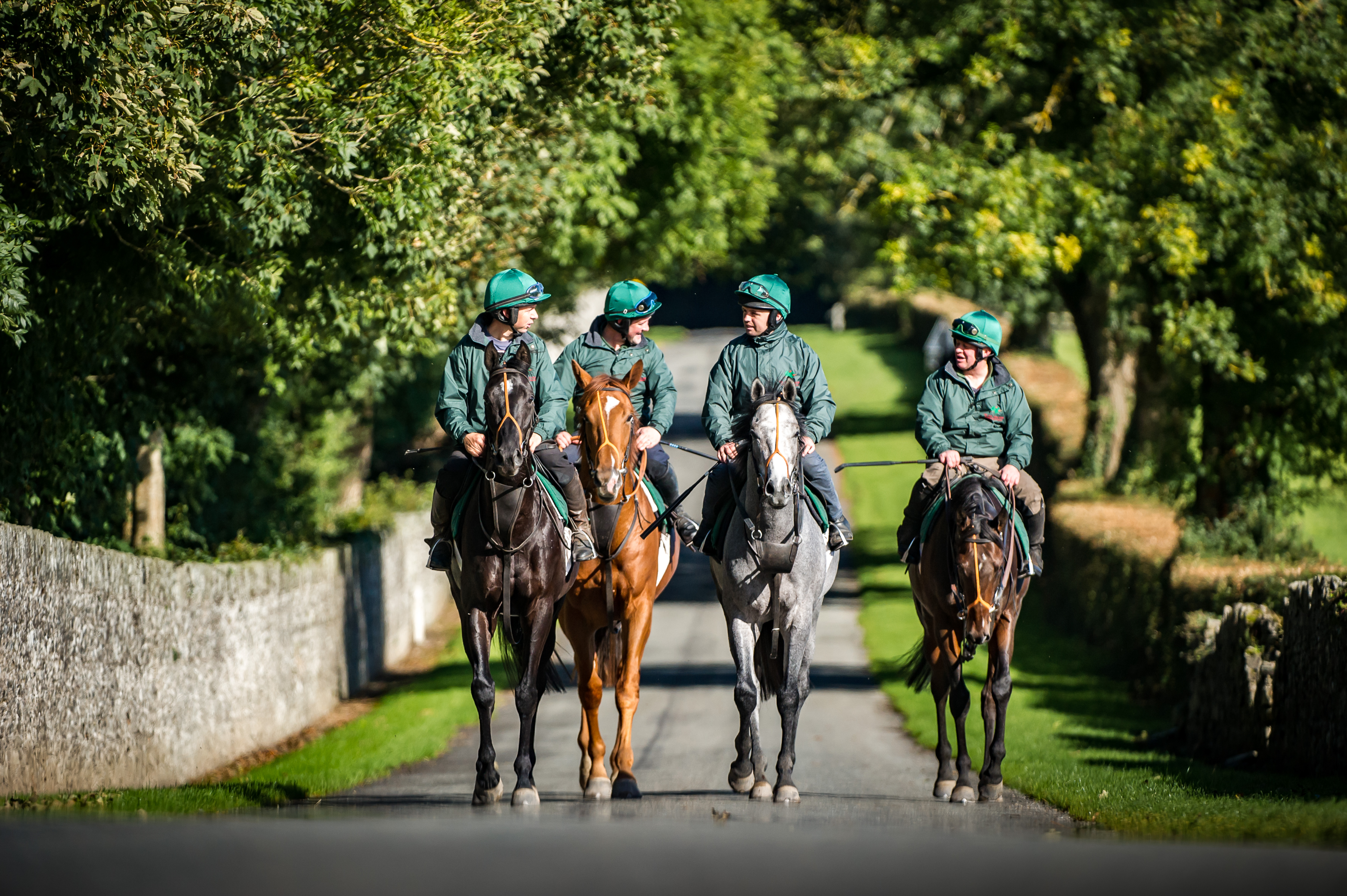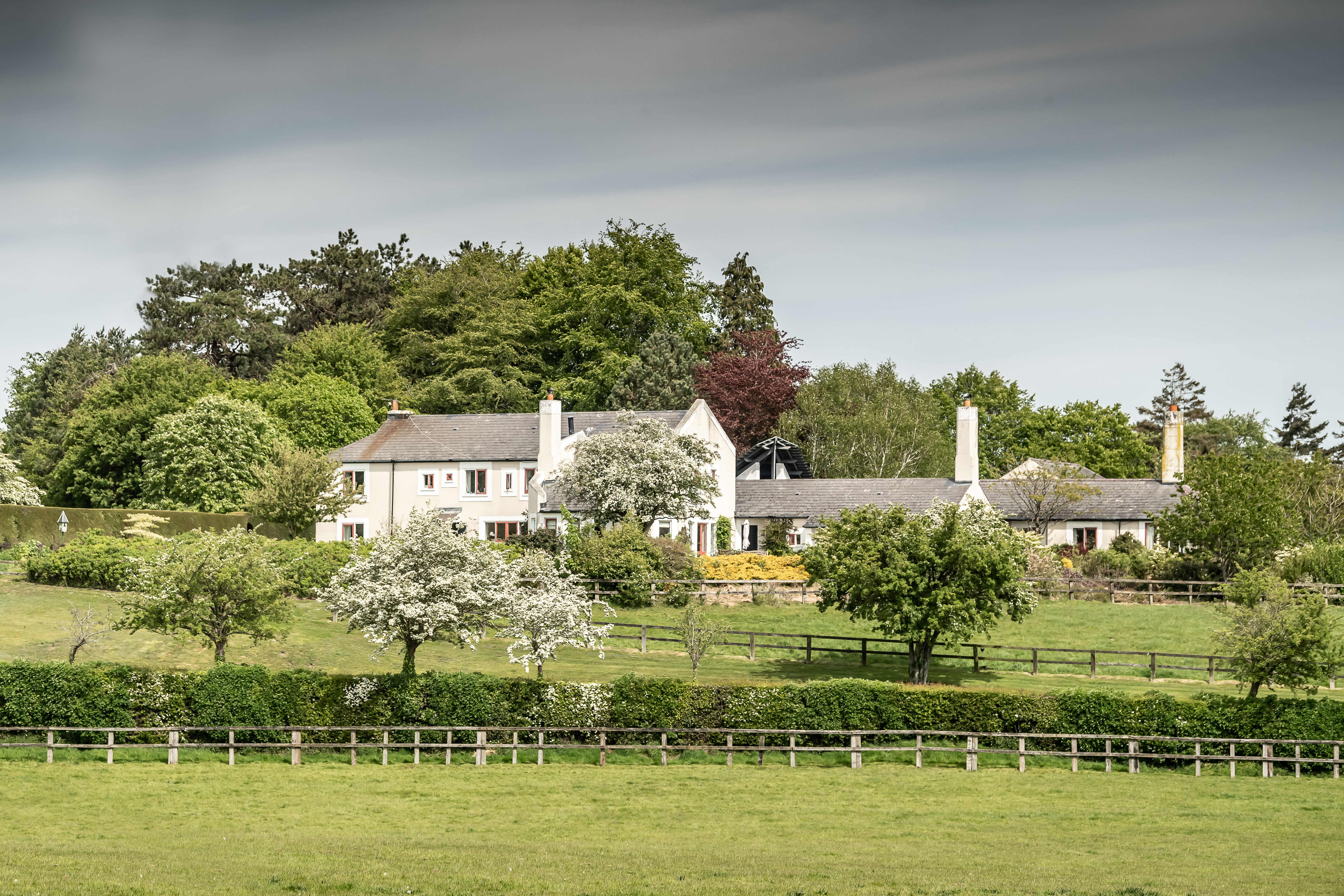Gilltown Stud
Gilltown is the Aga Khan’s public stud, currently home to Sea The Stars. Sallymount is adjoining to Gilltown and houses the Aga Khan mares post foaling.

The office yard at Gilltown Stud
The Irish Studs are made up of four different properties: Gilltown, Sallymount, Sheshoon and Ballyfair, formerly known as Brownstown.
Gilltown and the adjoining Sallymount stud cover approximately 1,250 acres (500 ha) in total. Many areas of Gilltown, including the house, were destroyed over a century ago, and have been rebuilt to create an optimised breeding operation. However their reconstruction has also maintained the principle that they are part of Ireland’s national heritage.
More recently, a new stallion barn was built and the covering barn renovated. Both were designed to meet the demands of a 21st century breeding establishment.

Horses in pre-training at Gilltown Stud
Gilltown is a typical anglo Irish estate and was built in Georgian style in the 17th century. Gilltown House overlooks a 16 acre lake, reconstructed to its original size. This lake and its surroundings are home to a large variety of wildlife and one of the principal features of the stud is its beautiful oak avenue. Larger than life-size bronzes of the exceptional racehorses Shergar and Sinndar, sculpted by David Wynne, also form part of the peaceful scenery.
Gilltown also hosts pre-training facilities for the yearlings. The horses are long reined and ridden away using the 100 acre field and its peat gallop, before being sent into training with their respective trainers in Ireland or France. The pre-training centre also admits limited numbers of visiting horses during the course of the year.
Sheshoon Stud
Sheshoon is the oldest continuously operative stud in both Ireland and England and was the first Irish farm purchased by the Aga Khan family in 1923.

Sheshoon stud
Sheshoon and its extension Ballyfair, formerly known as Brownstown, are approximately six miles due west of Gilltown. Although the original property of Sheshoon amounted to approximately 200 acres, it has grown to approximately 870 acres through development over recent decades, and the addition of Brownstown Stud has brought another 310 acres.
In spite of its longevity, Sheshoon has undergone thorough redevelopment in recent years. Improvements to old traditional buildings have been made and new, state of the art barns have been built to ensure the best possible care for all the stock.
A foaling unit is located in Sheshoon and serves both Aga Khan and visiting mares, while the yearlings are reared on the stud. Adjoining Ballyfair is home to a majority of the Aga Khan mares and their stock.